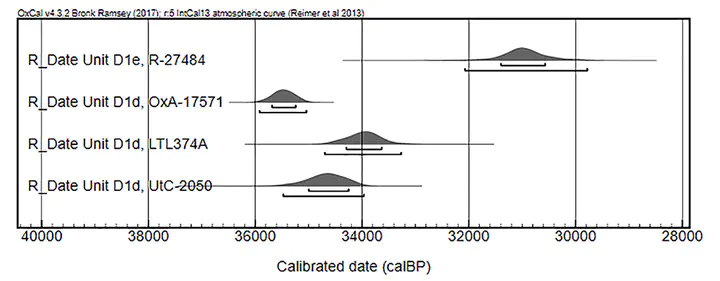A pre-Heinrich Event 3 assemblage at Fumane Cave and its contribution for understanding the beginning of the Gravettian in Italy

Abstract
In Europe, the cultural trajectories of large-scale Upper Paleolithic cultural complexes, such as the Aurignacian and the Gravettian, represent highly debated topics. In this paper, we examine the evidence from the youngest anthropic layer D1d at Fumane Cave (Venetian Prealps, northeastern Italy) to investigate the nature of human settlement dynamics in the Great Adriatic-Padanian Region following the late Protoaurignacian cultural unit and before the advent of the Heinrich Event 3. We present an unusual charcoal feature unearthed during archaeological excavations and we conduct a careful techno-typological assessment of the lithic assemblage using a combination of reduction sequence analysis and attribute analysis. We thus explore the mode of occupation of the site and discuss the available radiocarbon dates on a regional and supra-regional scale. This study permits to assign layer D1d to the Gravettian as described in several sites south of the Alps and along the Italian peninsula. Moreover, the scarcity and general composition of the lithic assemblage supports the idea according to which human settlement at the edge of the Great Po Plain was sparse and intermittent in the early stages of this technocomplex. Finally, we address the early radiocarbon age estimation available for layer D1d and hypothesize different scenarios that need to be further explored.